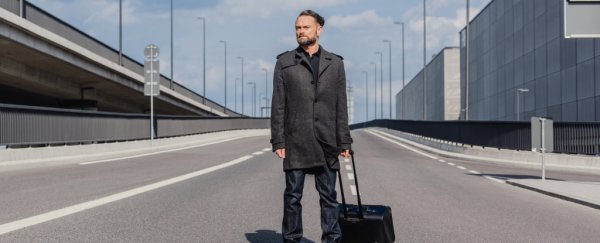We design cities. We live in them. We work in them, and we have fun in them. But boy howdy are we bad at getting around them.
According to mobile phone data from over 14,000 people living their daily lives, humans are terrible at calculating the shortest route through city streets. And the reason is really simple: our brains want us to face the direction we are going in, even if that's not the most efficient way of getting to our destination.
An international team of researchers led by MIT have now called this the 'pointiest path', and believe it occurs because our brains prioritize other tasks at the cost of navigational efficiency.
"There appears to be a trade-off that allows computational power in our brain to be used for other things – 30,000 years ago, to avoid a lion, or now, to avoid a perilous SUV," says architect and engineer Carlo Ratti of MIT's Senseable City Laboratory.
"Vector-based navigation does not produce the shortest path, but it's close enough to the shortest path, and it's very simple to compute it."
The seeds of the study were planted two decades ago, when Ratti was a student at the University of Cambridge in the UK. He noticed that he traveled to his department building along one route, but took a different route to get back to his room. It stands to reason that one route is shorter than the other, but the pattern of behavior held.
Since that time, technology has changed – and now we have the tools for collecting huge amounts of data on our activities. Large numbers of humans in many cities now keep a small, powerful computer on their person that can track their movements, an absolute treasure trove for scientists wanting to know why we choose the paths we do.
This is what the researchers tapped into: Completely anonymized data from over 14,000 pedestrians, whose GPS coordinates were recorded as they moved around the cities of Boston and Cambridge, Massachusetts and San Francisco, California over the course of a year. This included over 550,000 paths – enough data to discern some patterns.
Sure enough, a fascinating pattern did emerge. Rather than choosing the shortest path, pedestrians overwhelmingly chose to travel the path that allowed them to more directly face towards their destination as much as possible – even if turning aside would have taken them there more quickly.
Then, the researchers went a step further, generating a model to predict the irrational paths that appeared in the data. This confirmed that people do indeed prefer to face towards their destination.
"Instead of calculating minimal distances, we found that the most predictive model was not one that found the shortest path, but instead one that tried to minimize angular displacement – pointing directly toward the destination as much as possible, even if traveling at larger angles would actually be more efficient," said computer scientist Paolo Santi of MIT and the Italian National Research Council in Italy.
"We have proposed to call this the pointiest path."
Moreover, when making a round trip, people tended to choose different routes for the journey to the destination, and the journey back again, just like Ratti had caught himself doing at the University of Cambridge.
The pointiest path hasn't only been observed in humans. It's been recorded in animals, too, described as vector-based navigation. These studies suggest the brain navigates by calculating vectors; since most of us don't have top-down maps in our brains to navigate the way GPS does, vector-based navigation seems to be the next best strategy.
This is because evolution doesn't seek optimization, but "sure, OK, that works, I'm not dead" – something that has been dubbed "survival of the adequate".
The study results could help us design better cities, but they also underscore the need to understand the different ways brains and machines work.
"Computers are perfectly rational. They do exactly what code tells them to do. Brains, on the other hand, achieve a 'bounded rationality' of 'good enoughs' and necessary compromises. As these two distinct entities become increasingly entangled and collide – on Google Maps, Facebook or a self-driving car – it's important to remember how they are different from each other," Ratti wrote for The Conversation.
"The more people become wedded to technology, the more important it becomes to make technologies that accommodate human irrationalities and idiosyncrasies."
The research has been published in Nature Computational Science.
